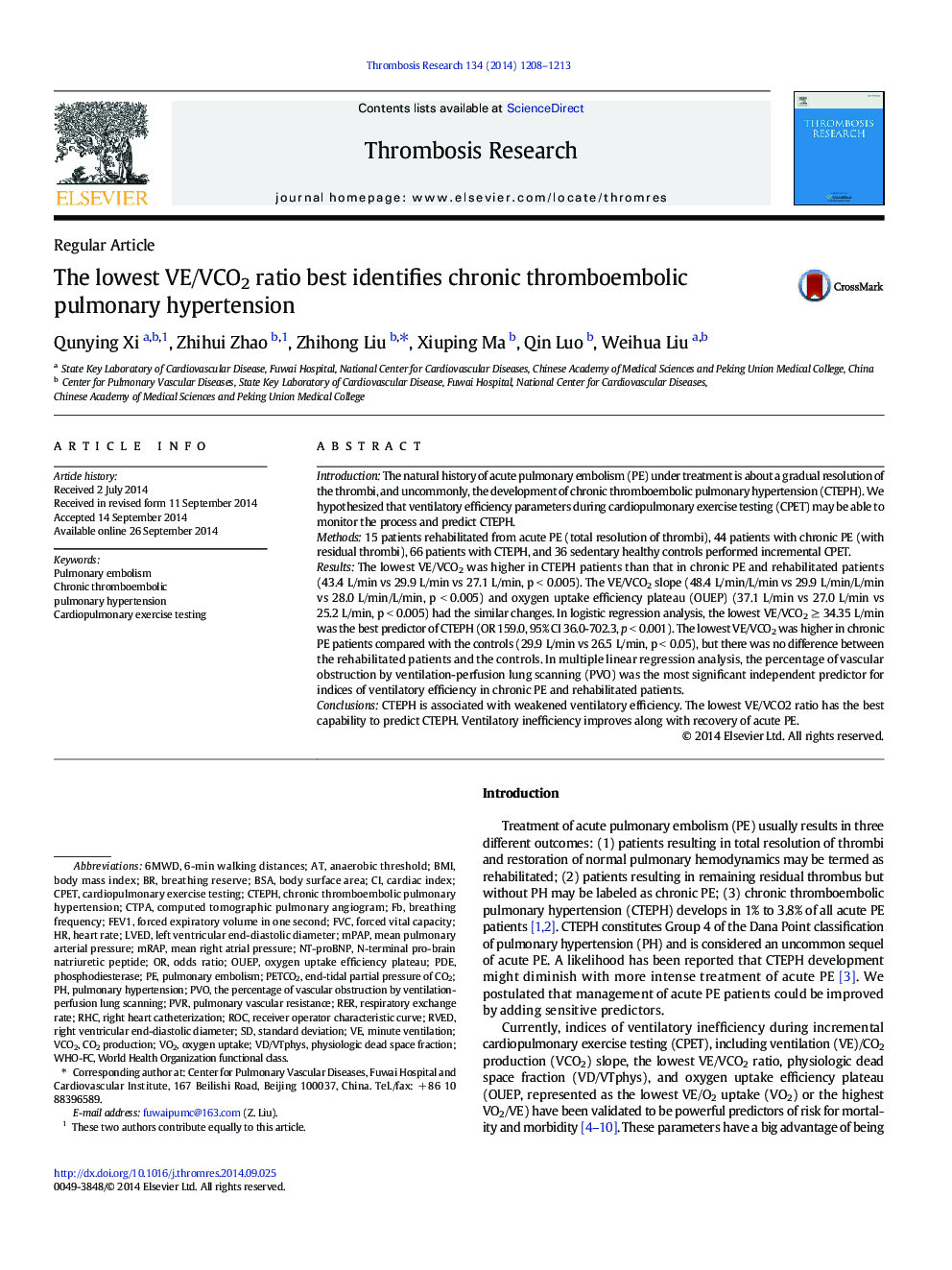| کد مقاله | کد نشریه | سال انتشار | مقاله انگلیسی | نسخه تمام متن |
|---|---|---|---|---|
| 6002191 | 1182966 | 2014 | 6 صفحه PDF | دانلود رایگان |

- Fifteen rehabilitated patients, 44 chronic PE patients, 66 CTEPH patients, and 36 healthy controls performed CPET.
- CTEPH is associated with weakened ventilatory efficiency.
- The lowest VE/VCO2 â¥Â 34.35 L/min was the best predictor of CTEPH.
- Ventilatory inefficiency improves along with recovery of acute PE.
IntroductionThe natural history of acute pulmonary embolism (PE) under treatment is about a gradual resolution of the thrombi, and uncommonly, the development of chronic thromboembolic pulmonary hypertension (CTEPH). We hypothesized that ventilatory efficiency parameters during cardiopulmonary exercise testing (CPET) may be able to monitor the process and predict CTEPH.Methods15 patients rehabilitated from acute PE (total resolution of thrombi), 44 patients with chronic PE (with residual thrombi), 66 patients with CTEPH, and 36 sedentary healthy controls performed incremental CPET.ResultsThe lowest VE/VCO2 was higher in CTEPH patients than that in chronic PE and rehabilitated patients (43.4 L/min vs 29.9 L/min vs 27.1 L/min, p < 0.005). The VE/VCO2 slope (48.4 L/min/L/min vs 29.9 L/min/L/min vs 28.0 L/min/L/min, p < 0.005) and oxygen uptake efficiency plateau (OUEP) (37.1 L/min vs 27.0 L/min vs 25.2 L/min, p < 0.005) had the similar changes. In logistic regression analysis, the lowest VE/VCO2 â¥Â 34.35 L/min was the best predictor of CTEPH (OR 159.0, 95% CI 36.0-702.3, p < 0.001). The lowest VE/VCO2 was higher in chronic PE patients compared with the controls (29.9 L/min vs 26.5 L/min, p < 0.05), but there was no difference between the rehabilitated patients and the controls. In multiple linear regression analysis, the percentage of vascular obstruction by ventilation-perfusion lung scanning (PVO) was the most significant independent predictor for indices of ventilatory efficiency in chronic PE and rehabilitated patients.ConclusionsCTEPH is associated with weakened ventilatory efficiency. The lowest VE/VCO2 ratio has the best capability to predict CTEPH. Ventilatory inefficiency improves along with recovery of acute PE.
Journal: Thrombosis Research - Volume 134, Issue 6, December 2014, Pages 1208-1213